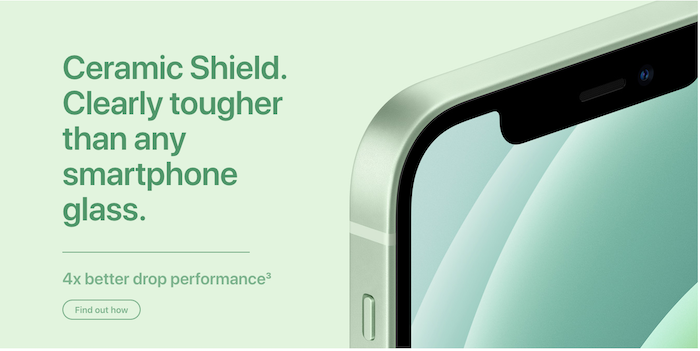How to Highlight Certain Products on Your Shopify Store
Whether they're looking for tennis shoes or a marketing automation platform, your buyers are interested in the attributes of your product. When evaluating items, features (together with price and design) are one of the most important elements to consider.
Would you purchase a computer without knowing its storage capacity? Or a pair of yoga trousers that you don't know if they stretch?
Despite their importance, many firms fail to make the benefits of their products evident on their websites, which might lead to a reduction in income. Because the characteristics of your product are such important selling aspects, they must be concise and appealing. Here's how to make sure your product's characteristics are correct.
What is the definition of a product feature?
A product feature is a feature of your product that sets it apart from other similar items on the market. It might be the way it looks (a design feature), how it works (a functional feature), or what it includes (an added-value feature).
However, your product's features don't have to be unique. Some characteristics become commonplace as design, technology, and production methods advance. You'd be hard-pressed to find a smartphone without one, but that doesn't mean it's not a feature that companies can tout. Whether your product has 10 or two features, you should be discussing them on your website.
Make your product's features as obvious as possible so that buyers can compare you to your competition. It's much more crucial if your product has the most advanced features available. The more you brag about them, the more likely customers are to notice—and even buy.
The six-step strategy
You understand what features are and why they're vital to have on your website. Let's take a look at seven ways e-commerce businesses and SaaS solutions might use them to their advantage.
1. Speak to your clients
To properly write about your product features, you must first identify your target audience. If you have buyer personas, use them to guide your content. Start by looking at reviews for your product and those of your competitors—for software firms, G2 is a wonderful place to start, and for e-commerce organizations, Amazon is a terrific place to start. Prioritize the aspects that clients rave about the most.
Avoid attempting to target everyone. This is especially crucial for SaaS solutions, which might have a wide range of applications. Each target consumer should have their own landing page where you just talk about the aspects that are important to them. You'll end up not targeting any audience well if you try to communicate to everyone on one landing page.
2. Social proof
It's fine to brag about your features, but every other firm does the same thing. Customers may not believe you even if your product has better characteristics. After all, just one-third of buyers have confidence in the brands they purchase.
You'll need social evidence to persuade them that your product works. To appropriate pages, include quotations and testimonials from your customers or reliable third parties that discuss your product's benefits. Include photographs and videos of them using your product, if possible.
Using actual individuals to demonstrate your product's benefits quickly gives them more credibility and increases the likelihood that customers will trust your brand.
3. Focus on the pros
Consumers are solely interested in what makes your product unique. What matters to them is how it benefits them. Every time you discuss a feature, bring up a benefit.
Benefits writing needs a little more work and imagination. The benefits of your product are self-evident, especially to you. What isn't so clear is how they help the user. Spend some time thinking about your consumer personas and reading product reviews.
These will assist you in getting inside your clients' heads and focusing on the benefits that are important to them. Interview your clients to find out exactly how they benefit from your product if you truly want to perform a good job.
4. Utilize both video and images
Words aren't the only technique to communicate the benefits of your product. Images and videos are frequently far more effective at conveying exactly what your product can achieve.
Images are a simple method to demonstrate how crucial features appear and function to customers. They're especially useful for design-oriented features and the majority of e-commerce items in general. If you incorporate user-generated photographs in your captions, you'll get bonus points.
Videos need a bit more effort, but they have the potential to be considerably more successful. You may, for example, make an explainer video that emphasizes your product's key characteristics, or a video for each feature separately.
5. Details
You'll want buyers to pay attention to some characteristics more than others. That's why it's critical to establish a feature hierarchy and seek ways to highlight the features that matter most to customers.
To do this, divide your page into pieces and assign each portion to a different feature. To attract your reader's attention, use a strong headline and follow it up with a short, snappy language and eye-catching pictures.
Another option is to delete your landing page's navigation menu. Users are compelled to focus on your sales text and learn about your product's features since there is no option to leave the page. Don't get too carried away with this strategy.
6. Content through blogs and emails
If you have a SaaS product, blog posts, emails, and other types of content marketing are some of the finest methods to emphasize its capabilities, especially if those features are new software releases.
Make sure your blog entries discuss the benefits that consumers may get from the new features rather than just the features themselves. A video, if you can make one, is also an excellent idea, as are a lot of screenshots.
There's no requirement to post these pieces on a regular basis, unlike other kinds of content marketing. It's sufficient to write them whenever you have a new feature to explain.
Email updates should be provided seldom as well. Only send an email when you have a new feature to announce and keep it brief. In the email, only provide the most important data and, if required, a link to a more in-depth blog article.
Existing users will learn about new features as they use the product, so sending an email about features that may re-engage lost clients is a good idea.
For example
Few companies are better than Apple at creating buzz about their products. There aren’t many better at highlighting their product’s benefits, either.
Apple makes a point of creating a new banner for every feature, pairs each with a user benefit, and includes high-quality images and graphics. Even if you already have an iPhone, reading their product pages makes you want to upgrade.





